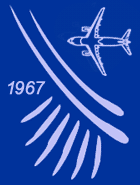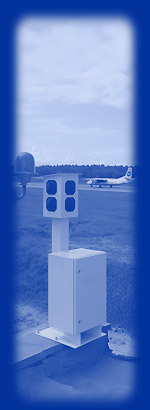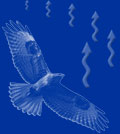The temporary level of scientific development and possibilities of manufacture give us a wide selection of means of birds number and behavior control.
There are a few criteria by which those means can be classified.
Classification: active and passive means. The active means start to operate on the direct command, they do not function without operators participation. The passive means work independently and do not require constant presence of the operator. Efficiency of the active means will always be a way higher than of similar passive ones, as only a qualified operator is able to detect and estimate all nuances of the situation and birds behavior and set (or change to) the optimum application mode of the given means.
To the active means belong the following items: mobile bioacoustic sets, powder and pneumatic guns, birds of prey, individual devices working on the base of laser generators and others.
To the passive means accordingly belong stationary programmable bioacoustic sets and ultrasonic devices, mirror balloons, birds models and others.
Classification: simple and complex means. Simple means produce only one stimuli affecting birds. Complex means are able to produce two or more such stimuli which can be of the same or different type of influence. Simple means in equal conditions usually concede in efficiency to complex means which can be described by the fact that birds perceive information on any process by several communicative cannels at a time (e.g. visual, sound and tactile). And the information received by each of the cannels can be both static and dynamic.
To the simple means belong models copying only the silhouette of a flying bird, strips of lightreflecting foil, colorful balloons, blinking lanterns, bioacoustic sets producing only one signal.
The the complex means belong pyrocartridges, designed specifically for bird scaring purposes (Khalzan), birds of prey, programmable bioacoustic sets (Universal-Acoustic) and others and also complexes combined of different scaring means applied altogether at the same territory.
Classification: acoustic, optical, chemical, pyrotechnical, mechanical, biological and other means. This one is a traditional classification of means used at the aerodromes for bird scaring purposes. The basis for this classification is the character of the way producing the effect and of influence on birds.
Classification: contact and contactless. At long application of the contact means there is no so-called accustoming effect or in other words bird do not stop react to the stimulus. The operation of the contact means is always accompanied by a serious threat to health and life of the bird being scared away. So if the bird start to react, the threat would be relised.
To the contact means belong birds of prey and other means including those that technically allow to increase the efficiency to the muximum level.
Mechanical obstacles. Various systems, physically preventing birds from direct contact with food, water, places to seat, shelters and nesting spots and not allowing them inside the protected zones. Only means of this group can prove 100% effective, while result of the others is always relative.
To the mechanical obstacles belong protecting nets, lattices, stripe curtains, spikes, construction of wire and others.
Traps. They can be of various constructions and applied both in active and passive mode. In the latter for individual or group neutralization of birds.
|





